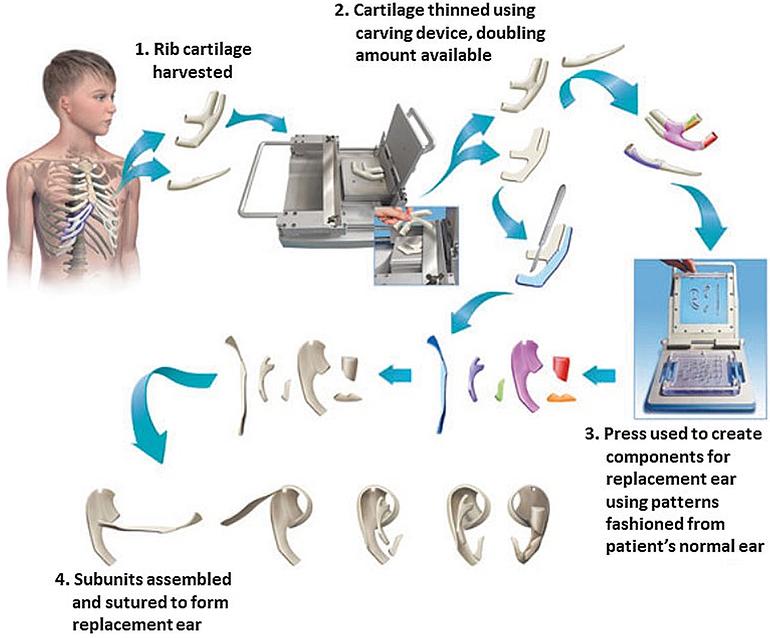At Johns Hopkins, clinical researchers have developed a set of surgical tools that allow them to more easily create a replacement ear for those born with malformed or missing ears. Currently, using cartilage harvested from the ribs, surgeons can create a new ear, but the process is difficult and requires some artistic talent to sculpt the cartilage into the right shape. These new devices make the procedure more streamlined and efficient.
One device lets the surgeon quickly and accurately slice the harvested cartilage into the required thickness, helping a little cartilage to go much further. Then, a “cookie cutter” style system automatically slices the cartilage sheets into smaller pieces that can be easily fitted together to form a natural ear shape.
Some children are born without an ear, which is called anotia, or with a malformation of the ear, which is called microtia. At present, the standard way in which these conditions are treated involves harvesting cartilage from the ribs of the patient, and then sculpting it freehand into an approximate ear shape before surgical implantation. This is difficult – surgeons are clearly very skilled with their hands, but artistic skills, such as sculpting, often are a little outside their comfort zone.
“Although ear reconstruction surgery for repairing microtia and anotia in both pediatric and adult cases has been practiced for a number of years, it still is a demanding procedure for both the patient and the surgeon,” said Angelo Leto Barone, a researcher involved in the project. “What makes it really difficult is that to construct a suitable ear requires a bit of artistic skill.”
To address this, these Hopkins researchers have developed new surgical tools to streamline the procedure. The first tool allows the surgeon to easily slice the harvested cartilage to the desired thickness. The device also allows the surgeon to harvest less cartilage from the patient. “The cartilage-slicing device basically doubles the amount of cartilage tissue available for surgery, meaning that less has to be harvested to safely produce the entire ear,” said Anirudh Arun, another researcher involved in the study. “We only need two and a half ribs instead of the traditional four from prior techniques — less waste and less discomfort for the patient.”
The second device then lets the surgeon create an ear shape in a “cookie cutter” fashion. The press contains steel blades and can quickly trim the sliced cartilage into the required shapes. “Not only is the process quicker, but the template eliminates the cartilage damage that often accompanies the sculpting done in previous reconstruction methods,” said Leto Barone. “This makes our system highly reproducible, user friendly, time efficient and cost effective. Best of all, it consistently yields a natural-looking ear that helps children avoid being teased or bullied, and enables adults to do things others take for granted, like wearing glasses.”
Study in Facial Plastic Surgery & Aesthetic Medicine: Cartilage-Sparing Microtia Repair: First in-Human Test of Autologous Framework Production
